There are five important reasons to sign and sing, using American Sign Language (ASL), Mother Goose Nursery Rhymes like Rock-A-Bye Baby. Signing with babies is supported with our five reasons. All parents, teachers, and care givers will learn why singing and signing with babies and toddlers is so valuable.
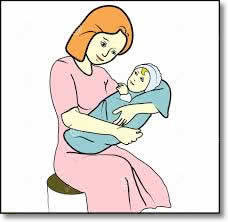 Rock-a-Bye-Baby was first printed in 1765 but some think that this Mother Goose Nursery Rhyme’s roots go back to the 1500’s. There are lots of thoughts about when and how Rock-a-Bye-Baby came about but for me it’s one of those very soothing rhymes that I sang to our children when they were babies, as I rocked them to sleep.
Rock-a-Bye-Baby was first printed in 1765 but some think that this Mother Goose Nursery Rhyme’s roots go back to the 1500’s. There are lots of thoughts about when and how Rock-a-Bye-Baby came about but for me it’s one of those very soothing rhymes that I sang to our children when they were babies, as I rocked them to sleep.
For me the lines: “When the bow breaks, the cradle will fall and down will come baby cradle and all” were just silly words that people sang because they were there.
Adapting Nursery Rhymes. I’ve written before and will again that I love how nursery rhymes and their melodies have been adapted and altered over the years. So, I decided to change the words to Rock-a-Bye Baby, when I sang to my babies, to these words because I didn’t want my baby to fall!
Rock– bye baby
In the tree top
When the wind blows
The cradle will rock
Sleep in the branches
Rock in the breeze
Sleep under star light
Sleep with the leaves.
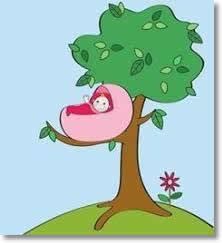
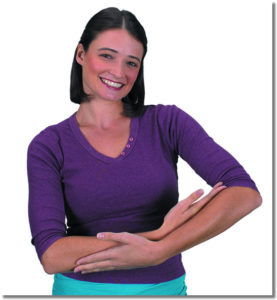 As our children got older we would sing and sign this nursery rhyme using American Sign Language (ASL). The sign for baby was easy because it looks like you are holding a baby and then just rock it for rock-a-bye.
As our children got older we would sing and sign this nursery rhyme using American Sign Language (ASL). The sign for baby was easy because it looks like you are holding a baby and then just rock it for rock-a-bye.
Our video for Rock-a-Bye baby demonstrates how to sing and sign this song with children. If you need instruction on the signs watch our Rock-a-Bye Baby instruction segment before you sing and sign the song.
There are five important reasons to sign and sing nursery rhymes with your baby and toddler.
Before I get to singing with babies, here is a description on “Why Use Signs with Your Baby” from Sign to Speak – Babies Can Talk
The first two of the five important reasons to sing and sign with babes are based on the differences between just singing or talking to babies and singing, or talking and signing with babies.
The first reason and difference is the external control. In a signed language, parents can easily mold and guide their baby’s hands into the correct formation and movement of a sign. Comparable manipulation of a baby’s speech mechanism is impossible.
The second reason and difference, and this is an important and significant difference, the parent and baby must be looking at each other to be able to understand the signs and communicate. For this reason, the quality of the communication is elevated.
Every sign your infant learns will help form new synapses. Your baby will not only know what an English word means and sounds like but also know what it feels like. The child will actually have a tactile memory of the word, will know what a word looks like, and will have a visual memory of it.
From the first shared meaning, you and your baby will begin the socialization process. Your child will gain a larger vocabulary from signing and a clear understanding of each word. Your signing child will generally talk sooner than non-signing babies and acquire a much larger usable vocabulary. Signing will encourage speech rather than delay it.
We do not believe that signing has any downside. Nor is there a correct way or an incorrect way to incorporate signing into your life.
Let’s add three important reasons to add singing when you sign with your baby.
Let me start by saying that you do not have to be a singer to sing with your baby. Babies do not judge your singing ability. They just love the bonding, caring, peacefulness that their mother’s singing brings into their life and Mother Goose Nursery Rhymes, like Rock-a-Bye Baby offer just that.
Singing to babies as an ageless human experience and there are lots of theories on why and how it started. For most of us the why and how just means we do it. It comes naturally and is a universal human activity.
Our third reason to sing and sign is that it brings comfort to babies to hear parents and caregivers singing. It sooths them and brings them back into a calm focus verses crying and being upset.
Fourth reason is singing and signing songs helps begin to build the foundations of language as they hear the rhythm of words as they are sung, learn the meanings through repetition, and develop powerful memorization and recall of words from the signs used as the song is sung By singing and signing Mother Goose Nursery Rhymes like, Rock-a-Bye Baby, babies begin to learn and understand rhyming and phonemic awareness which are basics for reading readiness.
Fifth great reason is for the bonding that occurs as parents and caregivers and babies develop through the singing and signing of simple rhymes. As we stated earlier, this activity requires the focus of both the adult and the baby. You can use this attention to distract their attention from a hurt, or a change they did not want to occur, or moving their focus from one activity to another. You can use this activity with smiles and gentle talk to enhance the bonding experience as babies strengthen their comfort and safety feelings towards you.
It’s especially helpful when singing and signing with babies that you choose just a few signs, especially signs you want them to learn like eat, more, all done, drink, sleep, love, and a few more key words you can choose for your family. Use these signs in the Nursery Rhymes you choose and at other
Our Sign to Speak – Babies Can Talk and Toddlers at Play books can help you to learn much more on the ASL signs and use sign language with young children.
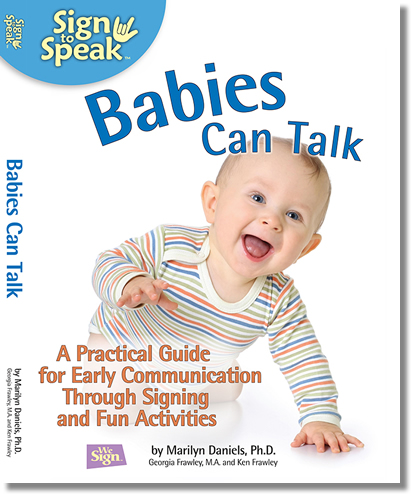
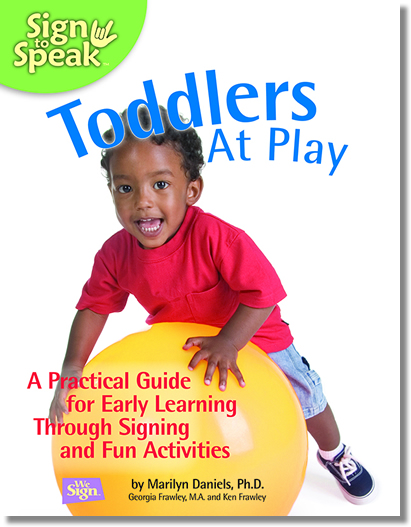
Our Mother Goose Nursery Rhyme CD link to offers over 30 Mother Goose Nursery Rhymes to sing, many of which are currently on our We Play Along YouTube Channel.
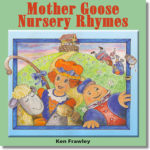
Whether or not you end up signing Mother Goose Nursery Rhymes is up to you, though I think you can see why signing adds a powerful dimension to this activity, I hope that you will introduce and sing lots of the traditional rhymes, like Rock-a-Bye Baby with your babies and your toddlers.
